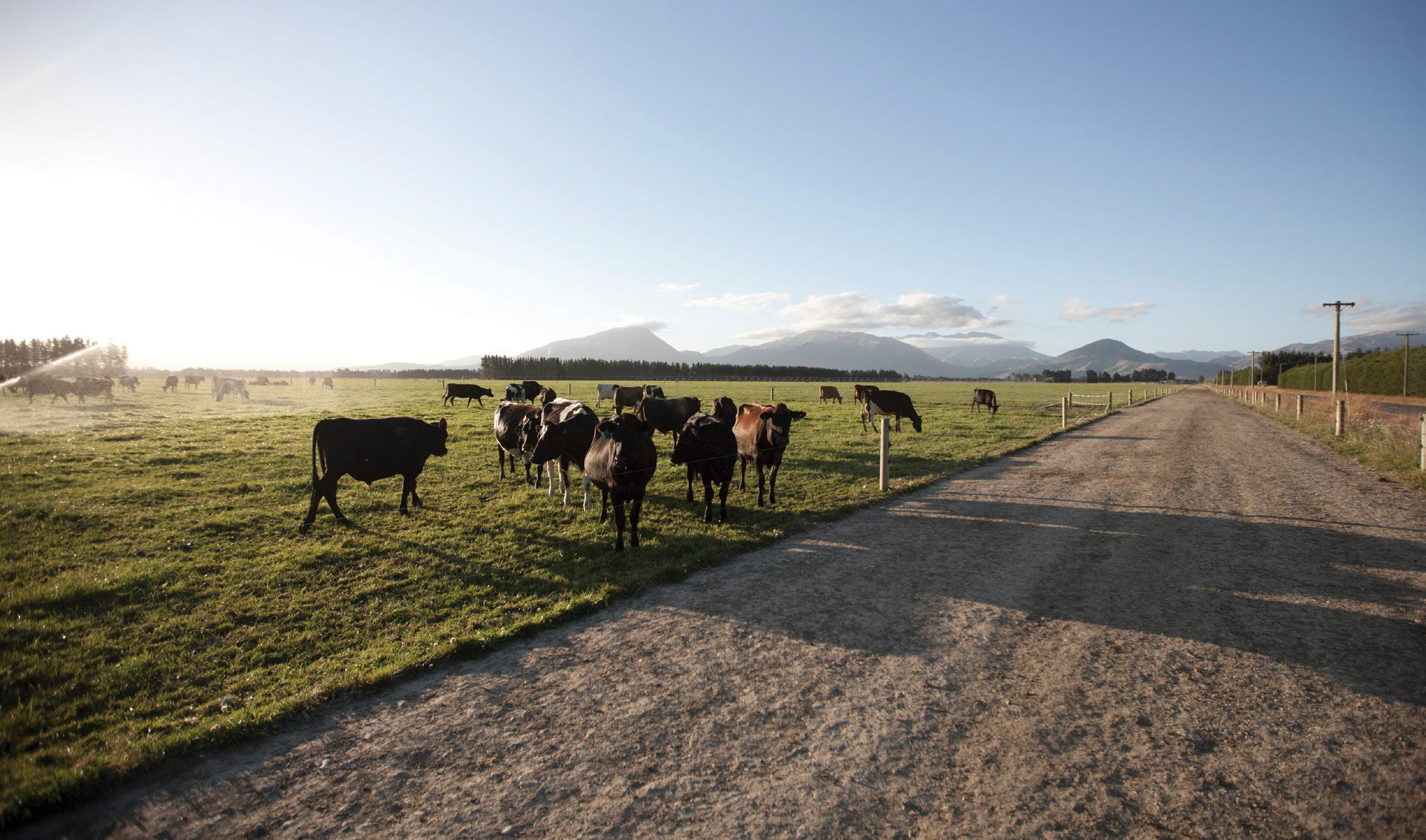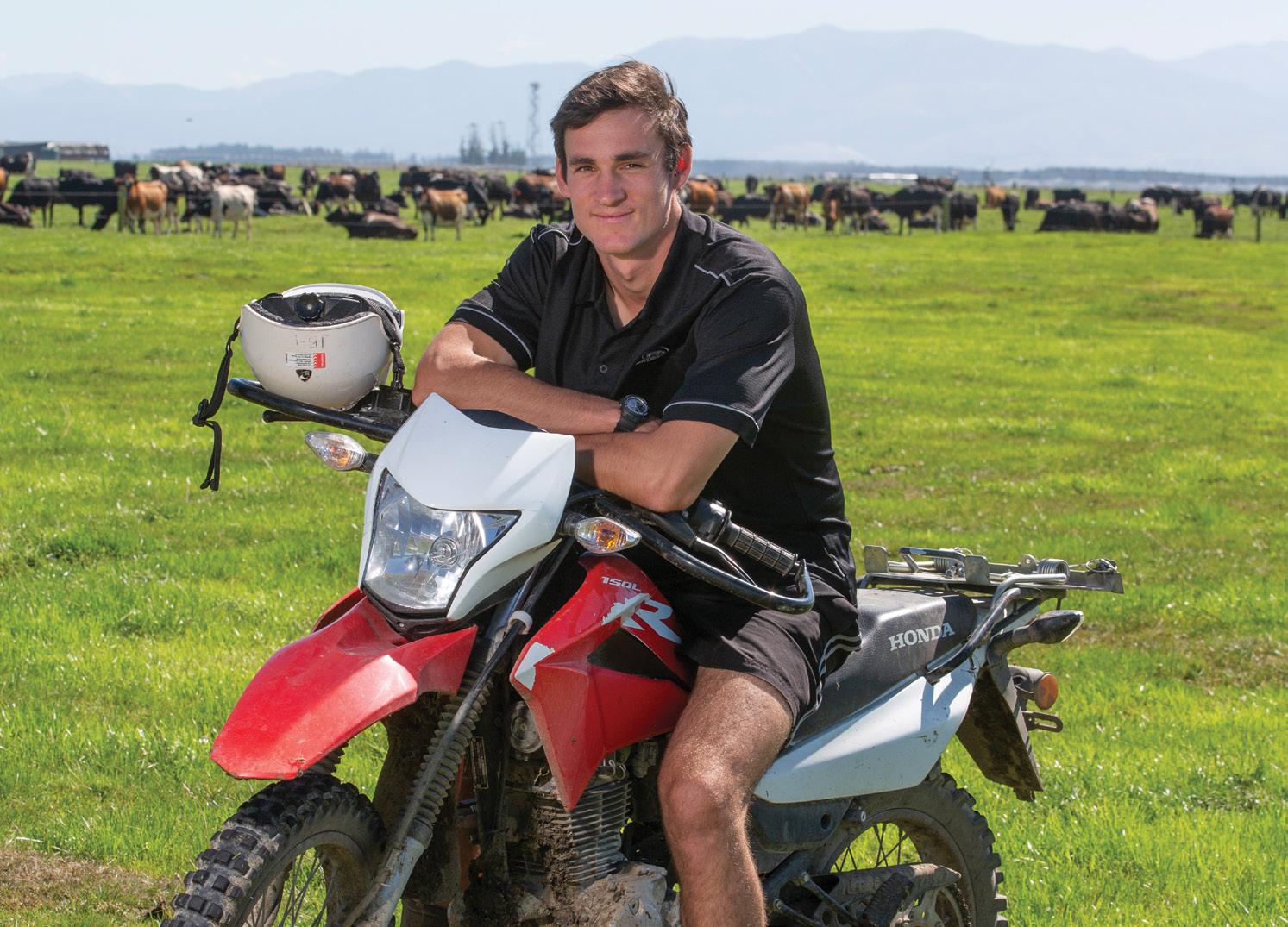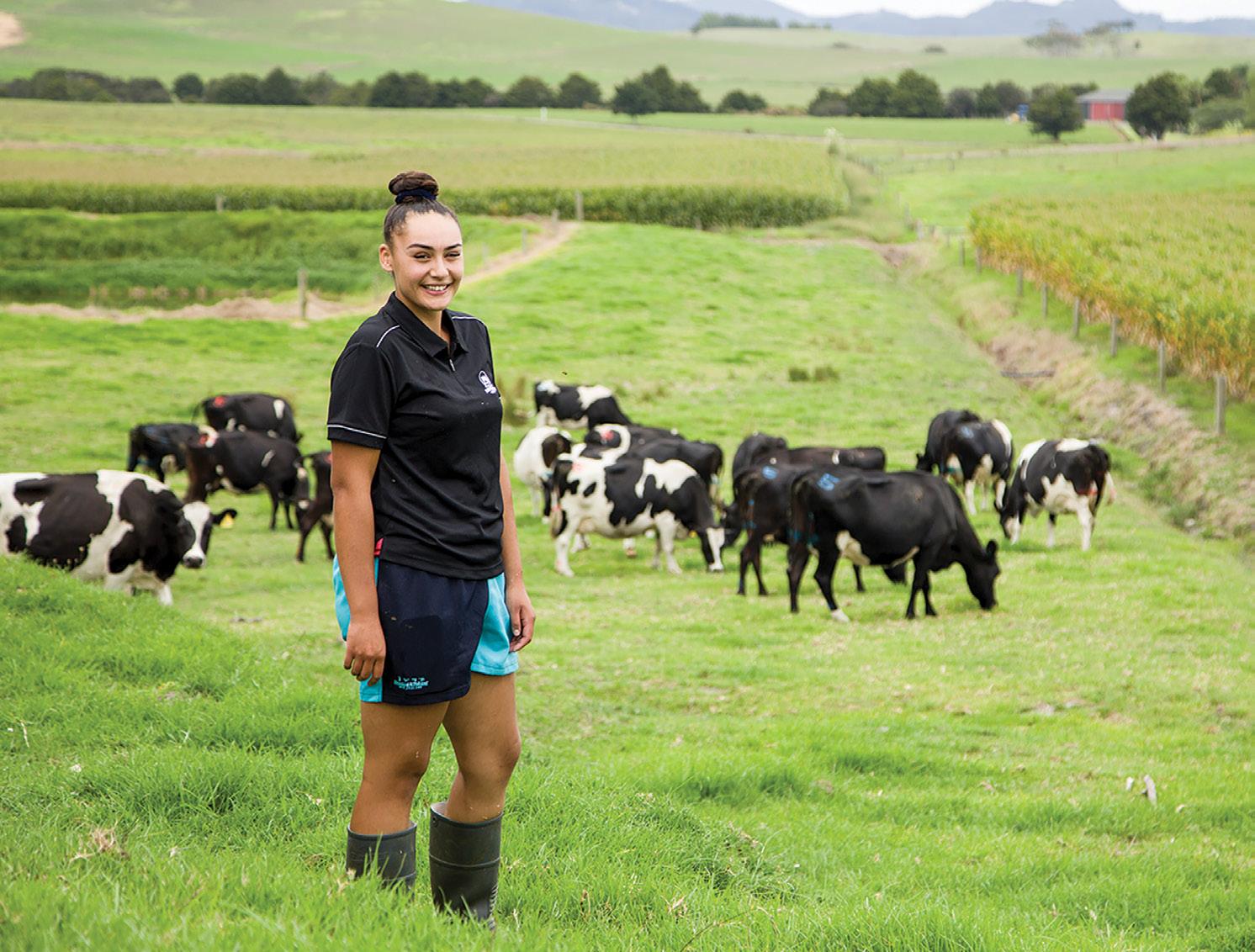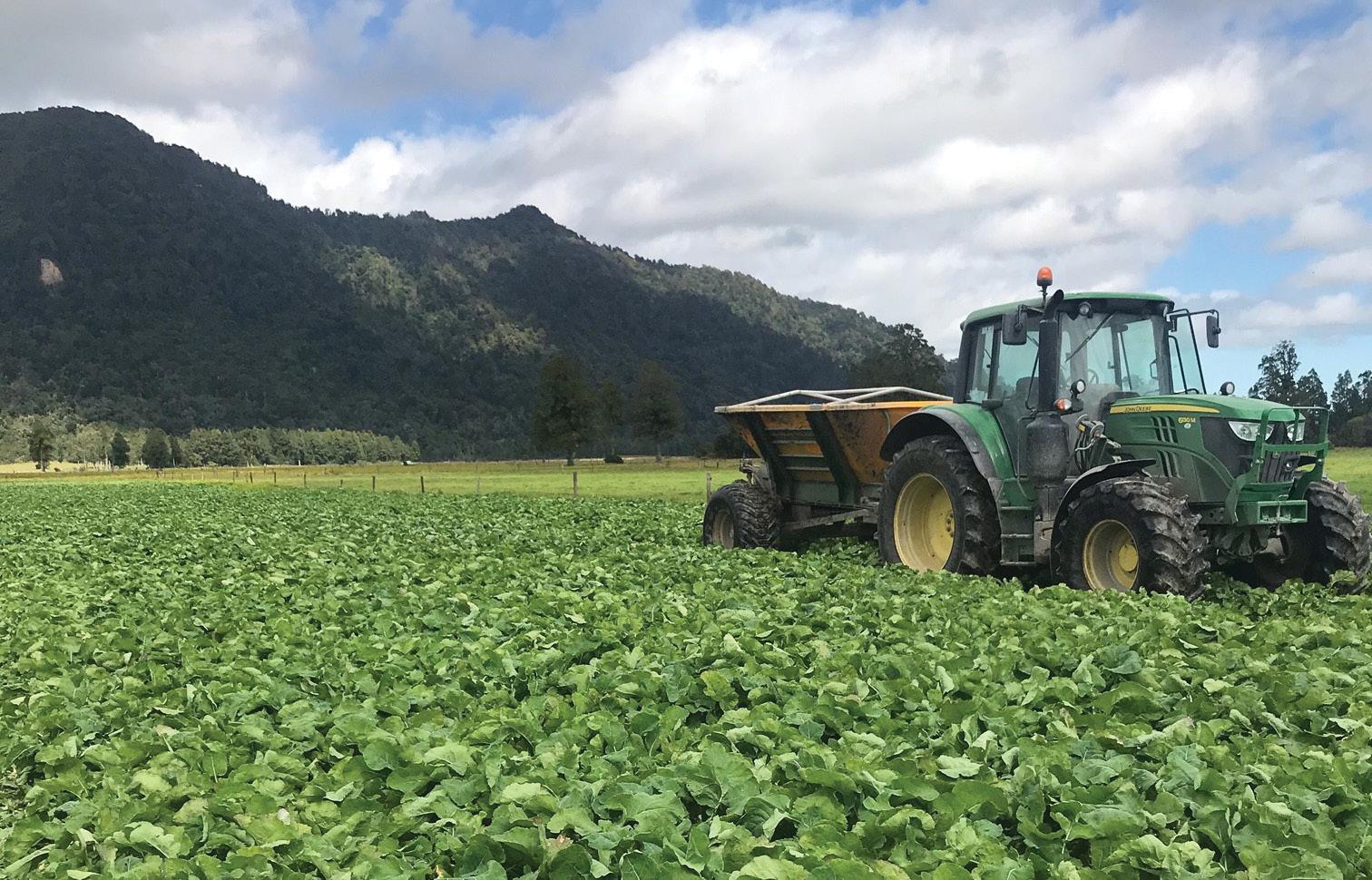STOCK BEEF CROSS CALVES
Beefing up the dairy calf crop Kintore Farm equity managers Nick and Melz Hoogeveen are using beef genetics from a variety of breeds to improve stock and reduce the number of bobby calves going to the freezing works. Sandra Taylor reports. Photos: Johnny Houston.
B
obby calves have been accepted as a necessary byproduct of the New Zealand dairy industry for generations but times are changing. Nick and Melz Hoogeveen are equity managers on Mid Canterbury’s Kintore Farm, a self-contained 1550 cow operation spread over 1064ha at Carew. Three years ago, the couple began to consider their options to try and reduce the number of bobby calves they were sending away for processing every year. It was a staff member Trudy Bensted 122
who was passionate about finding a home for every bobby calf – along with Nick’s involvement in the NZ Farming Facebook page – that were the catalysts for change. Nick says through the social media page, they were gauging public perception about the practice of slaughtering calves at such a young age and knew as an industry, they had to change. “Farming is not just about the dollars, it’s about the people, the environment and animal welfare, they all need to be taken into consideration.”
Two years ago, the couple dipped their toe in the water by using 25 straws of Speckled Park and Hereford bulls across their non-replacement cows in a bid to lift the value and finishing ability of their calves. A change of a grazing arrangement also meant they suddenly had the ability to finish the beef cross cattle within their own business so could see what beef genetics worked best for their system. Nick says as dairy farmers, the most important factor for them to consider when using beef genetics is easy calving.
Dairy Exporter | www.nzfarmlife.co.nz | April 2021







































